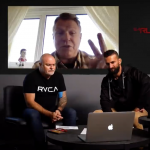Why the All Blacks needed Aaron Smith to recommit
On Tuesday morning All Black and Highlanders scrumhalf Aaron Smith recommitted to New Zealand Rugby for the next three years. Beyond the stability that the signing allows the Highlanders, the All Blacks set up would have been seriously impacted were Smith to not have re-signed writes Oliver Keohane.
The All Blacks have been World Rugby’s dominant force the past two decades, but no All Black team dominated in the same way as the era of 2011-2015. During this period, Aaron Smith made his debut and quickly established himself not only as the starting All Black scrumhalf, but as one of the best scrumhalves in the world.
Since his debut against Ireland in June of 2012, Smith has started 89 of his 97 tests, scored 21 tries and kicked one conversion for a total points haul of 107. He has also won 86 percent of his games in the All Black Jersey. At 32 years old, Smith is the most capped All Black currently, and the most capped All Black ever.
And the All Blacks simply would not be able to do without him yet. While still arguably one of the best scrummies in the world, Smith’s role within the All Black context will over the next three years become that of ushering in the new generation, which is something that in the last five years, for the first time in a long time, the All Blacks have not done so smoothly. This is why he is necessary still, to continue the All Black pattern of the changing of the old guard.
In 2015, the World Cup winning All Blacks were led by potentially the greatest rugby player to have played the modern game, in Richie McCaw, and had either Ma’a Nonu or Conrad Smith leave the field for Sonny Bill Williams. They had Dan Carter run off as Beauden Barrett ran on, Test Centurian Tony Woodcock still pumping the scrum and all 36 years of Kevin Mealamu make way for Dane Coles later on in games. They were so good because they held onto that experience and grit for as long as they could, and injected youth and talent when they felt they were in a position to do so. And that “youth” was often players nearing in on or exceeding 50 tests.
Since the 2015 World Cup, and the mass exodus of these players, this is something that the All Blacks, albeit still the most dominant side in World Rugby, have lacked in. Since Kieran Read’s departure, the loose trio has lacked structure, presence and cohesion. The All Blacks have no clear first and second number ten, in fact they don’t actually seem to have an answer to who should be playing there. Their change of the old guard has not been so smooth, and the new generation just hasn’t been as good as before.
So it is in this light that hanging onto their most experienced player was absolutely the right thing to do. Of course TJ Perenara would do well as the starting scrumhalf, but think about what is lost when the Perenara-Smith rotation becomes a Perenara-youngster rotation. The influence of a player and his experience extends deeper than his immediate presence on the field.
Smith has a beautiful opportunity over the next three years to play a similar role to that of his 2011-2015 predecessors, who guided the All Blacks to back to back World Cups and ushered in the new faces of 2012 and groomed them to the hardened players of 2015. There is a lot of talent in the scrumhalf region but they, like the All Blacks and Highlanders, can only be the better under Smith’s guidance for the next three years.

